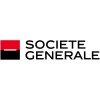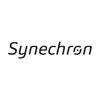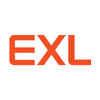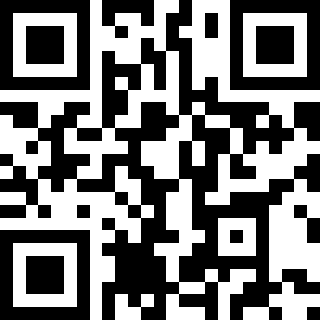Lead Business Analyst
80+ Lead Business Analyst Interview Questions and Answers


Q. What is Counterparty Credit Risk? What is CVA and how is it calculated?
Counterparty Credit Risk is the risk of loss due to a counterparty defaulting on a financial contract. CVA is the cost of this risk.
Counterparty Credit Risk is the risk that a party in a financial contract will default on their obligations.
CVA (Credit Valuation Adjustment) is the cost of this risk and is calculated as the difference between the risk-free portfolio value and the value of the portfolio with counterparty credit risk.
CVA takes into account the probability of defa...read more

Asked in Deloitte

Q. A task is approaching a deadline, and the scrum team says they cannot deliver a particular part of the sprint backlog. As a business analyst, how will you handle this situation?
As a business analyst, I will prioritize the remaining tasks and work with the scrum team to find a solution.
Assess the impact of the missed task on the overall sprint goal
Prioritize the remaining tasks based on their importance to the sprint goal
Collaborate with the scrum team to find a solution, such as extending the sprint or removing less critical tasks
Communicate the impact of the missed task to stakeholders and adjust expectations accordingly
Lead Business Analyst Interview Questions and Answers for Freshers


Q. What documents are typically delivered by a Business Analyst in a data migration project?
BA delivers various documents in a data migration project.
Requirements document
Data mapping document
Data quality report
Test cases and test results
User acceptance testing (UAT) plan
Training materials
Data migration plan

Asked in Deloitte

Q. If there are multiple stakeholders and one of the stakeholders is resistant to a new requirement, how do you handle that stakeholder?
Address the concerns of the old school stakeholder by understanding their perspective, communicating effectively, and finding common ground.
Listen to the stakeholder's concerns and try to understand their perspective.
Communicate the benefits of the new requirement in a way that resonates with the stakeholder's values and priorities.
Find common ground by highlighting areas where the new requirement aligns with the stakeholder's goals or objectives.
Involve the stakeholder in th...read more


Q. What is the difference between BDD and TDD? Elaborate with examples.
BDD focuses on behavior while TDD focuses on testing.
BDD stands for Behavior Driven Development while TDD stands for Test Driven Development.
BDD emphasizes on the behavior of the system from the user's perspective.
TDD emphasizes on testing the code and ensuring it meets the requirements.
BDD uses natural language to describe the behavior of the system in scenarios.
TDD uses code to test the functionality of the system.
BDD involves collaboration between developers, testers, and ...read more

Asked in Turing

Q. What is the angle between the minute and hour hands on a clock at 2:20?
The angle between the minute and hour hands of a clock at 2:20 is 50 degrees.
Calculate the angle formed by the hour hand from 12 o'clock to the current time (2:20)
Calculate the angle formed by the minute hand from 12 o'clock to the current time (20 minutes past the hour)
Subtract the smaller angle from the larger angle to get the angle between the minute and hour hands
Lead Business Analyst Jobs





Q. What is the difference between a user story and an epic?
A user story is a small, specific requirement while an epic is a larger, more general requirement.
User stories are typically written from the perspective of the end user and describe a specific action or feature they need.
Epics are larger requirements that may encompass multiple user stories and often require more time and resources to complete.
User stories are often used in agile development to break down larger requirements into smaller, more manageable pieces.
Epics can be ...read more

Asked in IKS Health

Q. How was the requirements being gathered? Who used to gather the requirements ? Is the PO or the Business Analyst in your team?
Requirements were gathered through collaboration between the Product Owner and Business Analyst in the team.
Requirements were gathered through stakeholder interviews, workshops, and document analysis.
The Product Owner and Business Analyst worked closely together to ensure all requirements were captured accurately.
The Business Analyst facilitated the requirements gathering process and documented the findings for review and validation.
Regular meetings were held with stakeholder...read more
Share interview questions and help millions of jobseekers 🌟


Asked in Turing

Q. The overall quality of the process isn't improving. How do you tackle this situation?
To improve the overall quality of the process, I would focus on identifying root causes, implementing process improvements, and monitoring results.
Conduct a thorough analysis to identify the root causes of the quality issues
Collaborate with stakeholders to develop and implement process improvements
Establish key performance indicators (KPIs) to monitor the effectiveness of the changes
Regularly review and adjust the process based on feedback and data
Provide training and support...read more

Asked in Deloitte

Q. How do you assess if a user story is complete or not. Have you heard about INVEST.
Assessing completeness of user stories using INVEST criteria.
INVEST stands for Independent, Negotiable, Valuable, Estimable, Small, and Testable.
A user story is complete if it meets all the criteria of INVEST.
Independence: User story should be self-contained and not dependent on other stories.
Negotiable: Details of the story can be negotiated between the team and stakeholders.
Valuable: Story should deliver value to the end user or customer.
Estimable: Team should be able to es...read more


Q. How is Counterparty Credit Risk reduced or mitigated?
Counterparty Credit Risk can be reduced or mitigated through various methods.
Performing credit checks on counterparties
Establishing credit limits for counterparties
Collateralizing transactions
Using netting agreements
Diversifying counterparties
Monitoring credit exposure regularly

Asked in ACS Group

Q. What is the first thing you do when receiving direction on a map?
I orient myself with the cardinal directions and locate my starting point.
Identify North, South, East, and West on the map
Locate my current position or starting point
Determine the direction and distance to my destination

Asked in Iris Software

Q. What is the process you have followed in Agile for software development when project was very new to you in your previous org and what is the difference handling the software development project in waterfall an...
read moreIn Agile, I adapt quickly to new projects through iterative development, unlike the linear approach of Waterfall.
Agile emphasizes collaboration and flexibility, allowing for changes based on feedback, unlike Waterfall's rigid structure.
In Agile, I engage stakeholders continuously, ensuring their input shapes the product, whereas Waterfall involves them mainly at the start and end.
For a new project, I would conduct a kick-off meeting to gather initial requirements and set up a...read more

Asked in Deloitte

Q. What is the difference between requirement gathering and requirement elicitation?
Requirement gathering is the process of collecting and documenting requirements from stakeholders, while requirement elicitation is the process of discovering and extracting requirements from stakeholders.
Requirement gathering involves documenting known requirements, while requirement elicitation involves uncovering hidden or unspoken requirements.
Requirement gathering typically involves interviews, surveys, and document analysis, while requirement elicitation may involve tec...read more

Asked in Tata Communications

Q. How can you improve our industry reputation and growth?
By implementing industry best practices, fostering collaboration, and promoting innovation.
Identify and implement industry best practices to improve efficiency and quality.
Collaborate with stakeholders to identify and address industry challenges.
Promote innovation by encouraging experimentation and risk-taking.
Establish a culture of continuous improvement through training and development.
Engage with industry associations and thought leaders to stay up-to-date on trends and em...read more


Q. What are the ceremonies in a Scrum delivery model?
Scrum ceremonies include Sprint Planning, Daily Stand-up, Sprint Review, and Sprint Retrospective.
Sprint Planning - planning the work to be done in the upcoming sprint
Daily Stand-up - a daily meeting to discuss progress and plan for the day
Sprint Review - a meeting to review the work completed in the sprint
Sprint Retrospective - a meeting to reflect on the sprint and identify areas for improvement


Q. What are the various methods of VaR calculation?
VaR can be calculated using historical simulation, parametric method, and Monte Carlo simulation.
Historical simulation uses past data to estimate potential losses.
Parametric method assumes a normal distribution of returns and calculates VaR based on mean and standard deviation.
Monte Carlo simulation uses random sampling to simulate potential outcomes and estimate VaR.
Other methods include delta-normal method and extreme value theory.
The choice of method depends on the nature ...read more

Asked in ACS Group

Q. What components are mandatory when writing a user story?
Components required for writing a user story
User persona
User goal
Acceptance criteria
Priority
Estimate
Description

Asked in Synechron

Q. Explain with practical scenarios how you have used problem-solving and other competencies.
Effective problem-solving involves identifying issues, analyzing data, and implementing solutions in a structured manner.
Identify the problem: For example, a drop in customer satisfaction scores led to a root cause analysis.
Gather data: Conduct surveys and interviews to understand customer pain points.
Analyze the data: Use statistical tools to identify trends and patterns in customer feedback.
Develop solutions: Collaborate with cross-functional teams to brainstorm and priorit...read more

Asked in LTIMindtree

Q. What are the important attributes that should flow from a policy to a claims system?
Attributes that should flow from policy to claims system
Accurate policy information
Clear coverage details
Validated policy limits
Proper claim adjudication
Timely claim processing
Effective communication with policyholders

Asked in Turing

Q. How can you measure 4 liters of liquid using only a 5-liter vessel and a 3-liter vessel?
To measure 4 liters from 5 and 3 liter vessels, fill 3 liter vessel, pour into 5 liter vessel, refill 3 liter vessel, pour into 5 liter vessel until it is full.
Fill the 3 liter vessel completely
Pour the water from the 3 liter vessel into the 5 liter vessel
Refill the 3 liter vessel
Pour the water from the 3 liter vessel into the 5 liter vessel until it is full

Asked in ACS Group

Q. What are the best practices to capture accurate requirements?
Best practices for capturing accurate requirements
Engage stakeholders to understand their needs
Use clear and concise language to avoid ambiguity
Document requirements in a structured format
Validate requirements with stakeholders
Prioritize requirements based on business value


Q. What are the main tenets of Basel 4?
Basel 4 is a set of banking regulations that aim to strengthen the resilience of the banking sector.
Basel 4 introduces new capital requirements for banks
It includes a new standardized approach for credit risk
It also introduces a new output floor to limit the variability of risk-weighted assets
Basel 4 aims to improve the comparability and transparency of banks' risk-weighted assets
It also includes new requirements for market risk and operational risk
Basel 4 is expected to be i...read more


Q. Explain the formulas used to calculate Expected Loss.
Expected Loss formulae calculates the potential loss from credit risk.
Expected Loss = Probability of Default x Exposure at Default x Loss Given Default
Probability of Default is the likelihood of a borrower defaulting on a loan
Exposure at Default is the amount of money owed by the borrower at the time of default
Loss Given Default is the percentage of the Exposure at Default that is not recoverable
Expected Loss is used to estimate the potential loss from credit risk
It helps ban...read more

Asked in ACS Group

Q. What new feature would you recommend for WhatsApp?
I recommend a feature to schedule messages in WhatsApp.
Users can schedule messages to be sent at a later time
This can be useful for sending birthday wishes or reminders
Users can also edit or cancel scheduled messages before they are sent

Asked in IKS Health

Q. Have you worked in the Waterfall model or the Scrum model?
Yes, I have experience working in both Waterfall and Scrum models.
I have experience working in Waterfall model, where requirements are gathered upfront and the project progresses in a linear fashion.
I have also worked in Scrum model, where the project is divided into sprints and iterative development is done.
In Waterfall model, I have worked on projects with well-defined scope and fixed timelines.
In Scrum model, I have experience in daily stand-up meetings, sprint planning, a...read more

Asked in Evalueserve

Q. What do you know about Business Analysis?
Business Analysis involves identifying business needs and finding solutions to business problems.
Business Analysis involves understanding the structure, policies, and operations of an organization.
It includes analyzing processes, systems, and workflows to identify areas for improvement.
Business Analysts gather and document requirements, create business cases, and facilitate communication between stakeholders.
They use tools such as SWOT analysis, PESTLE analysis, and data mode...read more

Asked in Bajaj Finserv

Q. What is the process for conducting a cost analysis?
Cost analysis involves identifying, evaluating, and comparing the costs of a project or business process.
Identify all costs associated with the project or process
Evaluate the costs to determine their impact on the overall budget
Compare the costs to similar projects or industry standards
Use tools such as cost-benefit analysis or cost-effectiveness analysis
Consider both direct costs (e.g. materials, labor) and indirect costs (e.g. overhead, administrative)
Factor in any potentia...read more

Asked in Deloitte

Q. What are the 3Cs of a user story?
The 3Cs of a user story are Card, Conversation, and Confirmation.
Card: A user story is typically written on a physical or digital card to capture the essence of the requirement.
Conversation: The user story should spark a conversation between the stakeholders to gather more details and clarify any doubts.
Confirmation: The user story should have acceptance criteria that define when the story is considered complete.


Q. What are the main differences between Basel III and Basel IV?
Basel 4 is an updated version of Basel 3 with stricter regulations and additional requirements.
Basel 4 includes new requirements for market risk, credit risk, and operational risk.
Basel 4 introduces a new standardized approach for measuring counterparty credit risk.
Basel 4 requires banks to hold more capital against their exposures.
Basel 4 also includes new disclosure requirements for banks.
Basel 4 is expected to be implemented gradually over the next few years.
Interview Experiences of Popular Companies





Top Interview Questions for Lead Business Analyst Related Skills



Reviews
Interviews
Salaries
Users

















